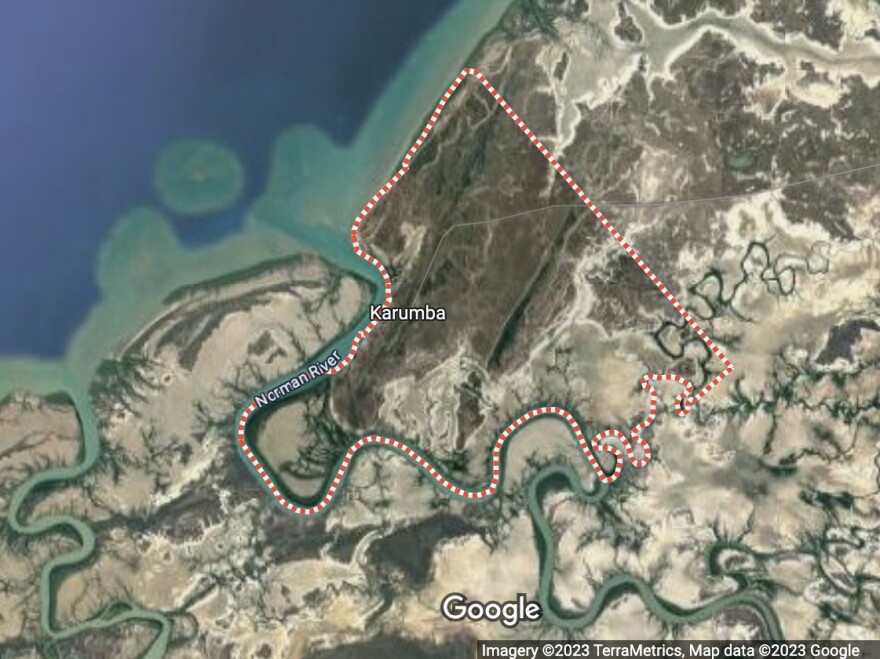A plague of rats is creating havoc in Karumba, a small coastal town in Queensland, Australia, where hordes of rodents are chewing on electrical wires and otherwise eating everything they can find — and washing up dead in massive numbers, creating a literal stink in the community.
"The stench is quite bad," Carpentaria Shire Council Mayor Jack Bawden, whose shire includes Karumba, told NPR. But if coastal winds prevail, he added, "it is still livable."
The rural town isn't alone: Other parts of Western Queensland are also enduring a plague of native long-haired rats, whose population exploded after copious rainfall boosted plant vegetation across hundreds of miles in the inland Outback.
The long-haired rat eats shoots and leaves — and then leaves for the north, seeking more food, researcher Emma Gray of the school of biology and environmental science at Queensland University of Technology told NPR.
Like an army, the mass of rats also has a very effective, and literal, force multiplier. Gray says they can "produce 12 young every three weeks when conditions are good!"
As photos and video from the scene show, thousands of rat carcasses are decaying in and around Karumba, after washing up in clumps on seawalls and shorelines.
Town in the grips of a 'Rat Plague'
It's not unusual for thousands of visitors to descend on Karumba, whose human population numbers in the hundreds. Those annual guests are "grey nomads" — retirees who arrive in campers and RVs, drawn by the allure of scenic water views, fishing, and a laid-back atmosphere.
But alarms were raised earlier this year. In July, a Carpentaria official informed the shire's council that "the public have reported an increased number of rats and mice." The council considered creating a fact sheet about what the meeting minutes dubbed a "Rat Plague."
"They come in waves," Karumba resident Jon Jensen told the 4BC radio station in Brisbane. "They almost seem trained and organized. They're in numbers, mate, and they swim around in the rivers like little puppy dogs."
Everywhere they go, the rats eat — and eat.
"They're hangry, they've swum a long way, they've come across land a long way," Jensen said, "and they're eating anything and everything they can get their hands on."
Rats destroyed a car by attacking its wiring at Derek Lord's rental business in Normanton, near Karumba, he told Agence France-Presse. The rodents were so bold, he added, they broke into his ducks' cages and stole their eggs.
You can't even escape them out on the water. Rats have been scampering up anchor chains of charter and fishing boats. Commercial fisherman Brett Fallon has been seeing "at least 100 rats a night" on his boat, he told Australia's ABC.
The rats' migration ends in Karumba

Queensland's topography, with a river system that twists its way to the northern coast, funnels the rodents toward the shore — and dead or alive, hordes of them arrive in Karumba, a fishing and port community on the Gulf of Carpentaria.
"The rats hit the Norman River and just start swimming where the tide and currents take a huge number out to sea," Mayor Bawden said. "Being hardy little buggers, high numbers reach the other side in Karumba."
Once they've arrived, there's little anyone can do to curtail the plague. Traps have been set up, he said, but in the face of such multitudes, the measure "really is a token gesture."
The best the government can do, he said, is to sweep bodies of rats away to keep walkways and boat ramps passable.
Animal Control Ranger Phil Grieve has been collecting dead rats by the hundred — that's how many can fit into each disposal bag, he told TV station 10 News First Queensland.
"First day, I got 18 — so that's 1,800" rats, he said.
When will the plague be over?
To the layperson, a plague of rats might seem to signal the apocalypse. But Gray says the long-haired rats arrive in cycles.
"This phenomenon is a natural process and occurs at irregular intervals ranging from 3-17 years," she said.
The last large rat migration or irruption in the region, Gray said, happened around 12 years ago. But records of them go back for centuries.
"As quickly as the rats irrupt or 'boom' in numbers, so too do they decline or 'bust,' " Gray said.
The decline can be linked to several factors, from a change to dry conditions to increases in inbreeding and disease — and predators that feast on the rodent influx. Feral cats, for instance, are eating well.
"Generally during a rat irruption, the area also sees a significant increase in the number of predatory birds such as letter-winged kites, black-shouldered kites and eastern barn owls," Gray said.
To Bawden, the mayor, the rats are "a nasty quirk of nature, and nature usually cleans up its own mess." He added, "This year we have them in all their glory and can't wait for them to disappear."
The long-haired rat's alternate name is "plague rat," according to the Queensland government website. The rat's conservation status, as you might guess: "Least concern."
Copyright 2023 NPR. To see more, visit https://www.npr.org.





